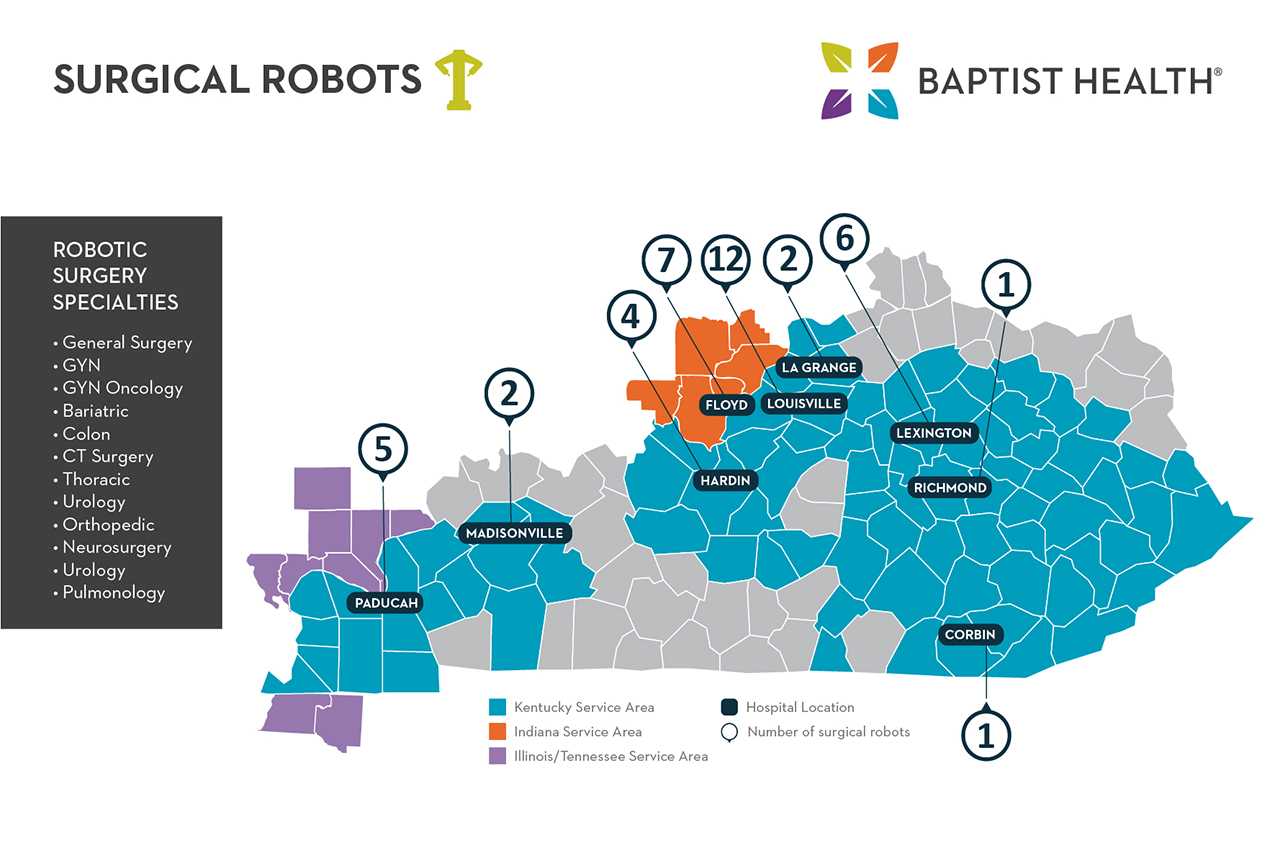Robotic Surgery
What is Robotic Surgery?
Robotic surgery, also known as robot-assisted surgery is typically used for minimally invasive procedures and it allows doctors to have more precision, flexibility, and greater vision when performing procedures. Robot-assisted surgeries can allow for more control and precision than some conventional techniques.
Depending on the robot used, surgeons typically operate from a console that controls and maneuvers the robotic arms. The console also provides high-definition, magnified 3-D images that allow the surgeon to have a more detailed image to navigate the procedure with. The computer software that operates the robotic arms allow for more precise movements that make these types of procedures safe, efficient, and effective.
Types of Robotic Surgery
There are several different types of robotic surgeries. Most robotic surgeries are minimally invasive procedures, and include:
- Bariatric
- Colorectal
- Thoracic
- Gynecology (and Gynecologic Oncology)
- General/Abdominal
- Orthopedic
- Spine
- Urologic
What Service Lines Use this Type of Surgery?
There are several different service lines that use robot-assisted surgeries. Typically, robot-assisted surgeries are minimally invasive, although some may be used for open surgical procedures. Service lines that use robot-assisted surgeries are Cancer Care, Bariatric, Ortho, Gynecology, Cardiac Care, Urology, and General Surgeries.
What are the Benefits for Patients and Doctors?
There are several benefits to using robot-assisted surgeries, for both the patient and the doctor. These types of procedures provide patients with a less-invasive surgery, often allowing for a safer and quicker recovery time. Additionally, it allows surgeons to perform procedures in a more precise, controlled, and safe way. More specifically, the benefits of robot-assisted surgeries include:
- Smaller incisions
- Lower risk of infection
- Less scarring
- Less pain
- Shorter hospital stays
- Faster recovery time
- Reduced blood loss
What are the Risks?
Although the risks seem to be less with robot-assisted surgeries than more conventional surgeries, there are still risks. The risks are similar to open surgery and should be discussed with your surgeon.

Know Your Risk
Choose an assessment and location before you begin.
